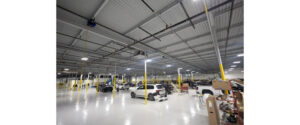The final national pollution standards are for passenger cars, light-duty trucks, and medium-duty vehicles for model years 2027 through 2032
Washington, D.C.—The U.S. Environmental Protection Agency (EPA) announced yesterday the final national pollution standards for passenger cars, light-duty trucks, and medium-duty vehicles for model years 2027 through 2032 and beyond.
“This approach will provide global supply chains greater flexibility to adapt to the regulations while reorienting to meet market demands and restructuring needs,” stated MEMA, The Vehicle Suppliers Association, in a statement regarding the EPA’s final rule, Multi-Pollutant Emissions Standards for Model Years 2027 and Later Light-Duty and Medium-Duty Vehicles.
EPA’s analysis considers a broad suite of available emission control technologies, and projects that consumers will continue to have a wide range of vehicle choices under the final rule, including advanced gasoline vehicles, hybrids, plug-in hybrid electric vehicles, and full battery electric vehicles. Compared to the existing MY 2026 standards, the final MY 2032 standards represent a nearly 50% reduction in projected fleet average GHG emissions levels for light-duty vehicles and 44% reductions for medium-duty vehicles.
The EPA’s final rulemaking embraces “Alternative 3” from the agency’s April 2023 proposed rulemaking. The chart below from SEMA outlines the emissions reductions in the final rulemaking vs. those outlined in the agency’s initial preferred proposal:
| EPA Proposed Rulemaking | EPA Adopted Rule |
| 2027: Required automakers to reduce fleetwide emissions by 18% vs. 2026 | 2027: Requires automakers to reduce fleetwide emissions by 9% vs. 2026 |
| 2029: Reduce fleetwide emissions by 40% vs. 2026 | 2029: Reduce fleetwide emissions by 27% vs. 2026 |
| 2032: Reduce fleetwide emissions by nearly 56% vs. 2026 | 2032: Reduce fleetwide emissions by 50% vs. 2026 |
In response to the EPA’s final rulemaking, SEMA President and CEO, Mike Spagnola said, “The EPA has taken a small step in the right direction by providing automakers and specialty aftermarket businesses additional time to develop innovative solutions to reduce emissions. While I am proud of our industry’s role in helping to delay the EPA’s most aggressive EV mandates, there is still much work to do to get government regulators to embrace technology-neutral solutions that will reduce emissions while limiting adverse impacts on small businesses and consumer choice.”
John Bozzella, President and CEO, Alliance for Automotive Innovation, commented in a news release, “The future is electric. Automakers are committed to the EV transition — investing enormous amounts of capital and building cutting edge battery electric vehicles, plug-in hybrids, traditional hybrids and fuel cell vehicles that drive efficiency and convert petroleum miles to electric miles. These adjusted EV targets — still a stretch goal — should give the market and supply chains a chance to catch up.”








Comments are closed.